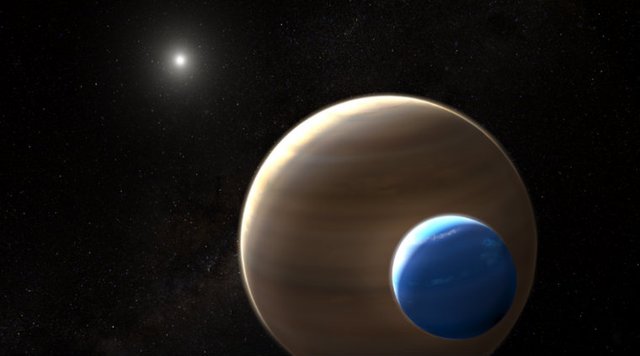First evidence of Moon outside our solar system: Astronomers
To look for exomoons, the team analysed data from 284 Kepler-discovered planets that were in comparatively wide orbits, with periods greater than 30 days, around their host star.

Using the Hubble Space Telescope and the Kepler Space Telescope, astronomers have found the first compelling evidence for a Neptune-sized moon orbiting a giant gas planet 8,000 light-years away. The detection of the candidate exomoon — moons orbiting planets in other star systems — is unusual because of its large size, comparable to the diameter of Neptune. Such gargantuan moons do not exist in our own solar system, where nearly 200 natural satellites have been catalogued. Astronomers first found exoplanets — planets outside our own Solar System — 30 years ago. However, the search for moons orbiting these exoplanets was not successful — until today.
“This would be the first case of detecting a moon outside our solar system,” said David Kipping, Assistant Professor at the Columbia University in New York. “If confirmed by follow-up observations, the finding could provide vital clues about the development of planetary systems and may cause experts to revisit theories of how moons form around planets,” he added.
1
SHARES
SHARE
By: IANS | New York | Published: October 5, 2018 6:20:16 pm
Astronomy, Planetary science, Spacecraft, Space observatories, Exoplanetology, Observational astronomy, Edwin Hubble, Hubble Space Telescope, Lockheed Corporation, Kepler, Planet, Neptune, giant gas planet, Columbia University, Assistant Professor, star
X
The moon is estimated to be only 1.5 per cent the mass of its companion planet. (Image: NASA)
Using the Hubble Space Telescope and the Kepler Space Telescope, astronomers have found the first compelling evidence for a Neptune-sized moon orbiting a giant gas planet 8,000 light-years away. The detection of the candidate exomoon — moons orbiting planets in other star systems — is unusual because of its large size, comparable to the diameter of Neptune. Such gargantuan moons do not exist in our own solar system, where nearly 200 natural satellites have been catalogued. Astronomers first found exoplanets — planets outside our own Solar System — 30 years ago. However, the search for moons orbiting these exoplanets was not successful — until today.
“This would be the first case of detecting a moon outside our solar system,” said David Kipping, Assistant Professor at the Columbia University in New York. “If confirmed by follow-up observations, the finding could provide vital clues about the development of planetary systems and may cause experts to revisit theories of how moons form around planets,” he added.
To look for exomoons, the team analysed data from 284 Kepler-discovered planets that were in comparatively wide orbits, with periods greater than 30 days, around their host star. The observations measured the momentary dimming of starlight as a planet passed in front of its star, called a transit. The researchers found one instance, in Kepler 1625b, that had intriguing anomalies
“We saw little deviations and wobbles in the light curve that caught our attention,” Kipping said, in the paper reported in the journal Science Advances.
The moon is estimated to be only 1.5 per cent the mass of its companion planet, which itself estimated to be several times the mass of Jupiter. This value is close to the mass-ratio between the Earth and its moon. Like its moon, Kepler-1625b is also bigger than its counterparts in the Solar System. The exoplanet is a gas giant, several times more massive than Jupiter. It orbits its parent star at a distance similar to the distance between the Sun and Earth, which puts it — and its candidate moon — at the inner edge of the habitable zone of the star system.
Hi! I am a robot. I just upvoted you! I found similar content that readers might be interested in:
https://in.news.yahoo.com/first-evidence-moon-outside-solar-system-astronomers-090607941.html